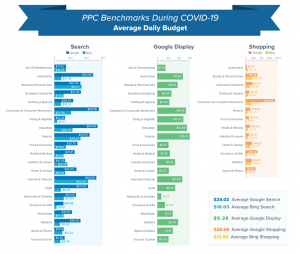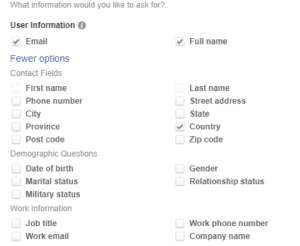Retailers see lots of new customers during the holiday shopping season. Contributor Jordan Elkind explains how to keep the momentum going into the new year.

E-commerce marketers had a lot to be thankful for this year.
According to statistics from Adobe Digital Insights, digital transactions on Cyber Monday were up 16.8 percent year over year — making it the largest online shopping day in US history. (Mobile sales cracked a record $2 billion on Cyber Monday.) Online sales on Black Friday were also up 17 percent over last year.
These are hard-won gains for retail marketers, who have been navigating a growing number of ad formats and digital media investments in order to acquire and retain customers. According to research by Magna, 2016 was the year when digital ad spending finally surpassed TV ad sales in the US.
But while holiday time can feel like a spending spree for marketers, it won’t be long until the onset of the post-holiday hangover: that lull in retail demand in January that has marketers scrambling to drum up sales.
Wouldn’t it be great to be able to wring more value out of every holiday marketing dollar, long after the holidays are over? The secret, according to retail experts, is maximizing the long-term value of customers acquired during the holiday period. Here are three lessons from industry leaders on how to do exactly that:
1. PLAN: Sort holiday friends from those with year-round potential
Why it matters:
After spending so much on customer acquisition, it can be tempting to invest more in cultivating all customer relationships post-holiday. For many brands, though, it makes more sense to invest strategically in those customers who have the potential to become year-round shoppers, while waiting until the tinsel is hauled out again next year to engage with holiday-only friends.
The rationale? Focusing on customers who actually have year-round potential can maximize ROI when budgets are tight. And even in a low-cost direct channel like email, over-engaging with holiday-only customers off-season — when they’re not interested — may negatively impact deliverability or lead them to unsubscribe, cutting off the chance to engage with them when it actually matters.
Why it’s difficult:
With so many new customers acquired, it can be difficult to identify which customers actually have the potential to engage year-round.
How to do it:
A predictive analytics platform can leverage machine learning to identify hidden relationships in customer data, highlighting how likely different individual customers are to engage in the future. But even teams without this kind of software can make inroads.
Simply divide customers acquired from previous holiday seasons into segments — those who went on to repeat at other times of the year, and those who only engaged around holiday time — and compare attributes.
One retailer, for example, discovered that holiday shoppers with year-round potential tended to come from different acquisition channels and buy different categories from holiday-only shoppers. These kinds of insights can help with early identification of year-rounders for post-holiday investment.
2. STRATEGIZE: Identify common post-holiday journeys
Why it matters:
Determining which customers to focus on cultivating for a post-holiday relationship is only the first step. Understanding how to communicate with different customers is crucial to boosting crucial customer-centric metrics like the Early Repeat Rate.
For example, let’s say that a customer comes in buying a gym bag on promo during the holidays. How should the retailer introduce her to its larger brand story and highlight other products that she might find relevant — say, athletic apparel?
Why it’s difficult:
Achieving personalized customer relationships requires that data be centralized into clean customer profiles. And it requires the ability to sift through lots of data to look for patterns around common post-purchase journeys
How to do it:
Here again, a predictive analytics platform can be valuable in distilling vast amounts of data into concrete insights on common customer journeys. For those without access to such technology, historical analytics can begin to provide visibility. Focus on the most important longitudinal patterns in three core areas of the customer experience: product, channel and promotion.
For example, what do customers who come in buying chunky jewelry tend to buy during the rest of the year? Customers who first engage via the affiliate channel during the holidays — do they tend to prefer engaging via email or the app? And what’s the promotional behavior of customers who first came in for holiday steals?
3. EXECUTE: Test and optimize high-impact channels
Why it matters:
Now that the marketing team knows which customers to focus on and how to communicate with different customers, it’s time to put the post-holiday cultivation plan into action. But the timing is tough.
The influx of traffic and demand over the holidays typically leaves a trail of marketing detritus (like abandoned cart emails and retargeting ads) well into January. Amid this wasteland, being able to connect with customers in channels that break through the noise is crucial for post-holiday cultivation
Why it’s difficult:
It can be challenging for marketing teams to operationalize a multichannel cultivation strategy; it requires coordination (and ideally, incrementality testing via controlled experiments) across multiple channels.
How to do it:
A customer data platform can help with experimental design, distribution of segments to different marketing tools and automated campaign measurement. Test into the channels that make sense for your business.
Some inspiration: Direct mail has long been a mainstay of CRM, but for the first time, the rise of programmatic direct mail is making it possible to deploy perfectly timed post-purchase triggers.
Similarly, the convergence of ad tech and CRM has opened up new possibilities for retailers: Facebook Custom Audiences, Google Customer Match, and non-retargeting display via CRM onboarding providers like LiveRamp.
Ultimately, identifying the pockets of customers to invest in, mapping out personalized customer journeys and delivering relevant experiences on the right channels can help maximize the effectiveness of holiday marketing dollars well into the new year.
Opinions expressed in this article are those of the guest author and not necessarily Marketing Land. Staff authors are listed here.
Marketing Land – Internet Marketing News, Strategies & Tips
(59)









